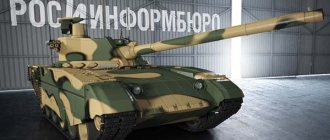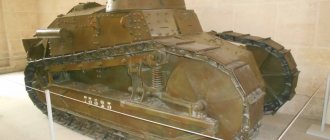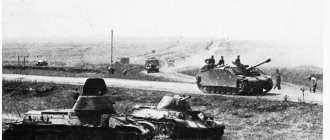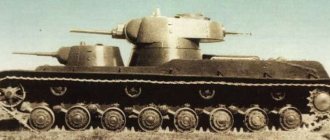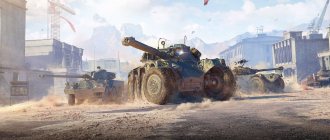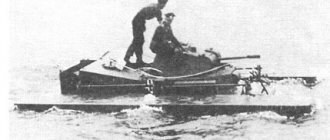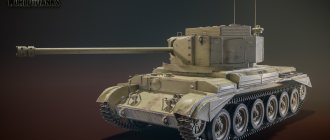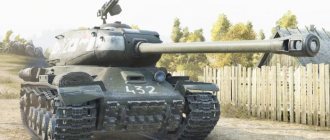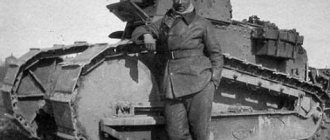Three generations of world tanks
Three generations of world tanks . The Second World War, also called the War of Motors, died down. Tank forces made a decisive contribution to the success of ground operations. It is not surprising that after the start of the Cold War, increased attention was paid to the development of armored vehicles. The last tanks of the Cold War will form the backbone of tank forces until the middle of the 21st century; fourth-generation serial tanks have never been created. The first post-war generation was created during the Second World War. However, if the British and Americans tried to design vehicles capable of fighting German heavy tanks, then we, as always, went our own way. Soviet designers worked more proactively and did not even particularly strive to test new developments in combat conditions. In 1944, the USSR created the T-44 medium tank, and a year later the even more promising T-54 (at that time the guys over the hill didn’t have anything even close in terms of performance characteristics).
Medium tank T-44 1944
In turn, the Western allies of the USSR, by the end of the war, released the first copies of the Centurion (Great Britain)
Tank "Centurion" - thirty years in service
and M26 General Pershing (USA). It was these tanks that determined the face of world tank building for several decades.
tank M26 General Pershing
The T-54, and later the T-55, repeatedly modernized, were in service with several dozen countries. Having changed weapons twice, the Centurion remained in service for 30 years. As a result of several upgrades, the Pershing became the M48 Patton, which formed the basis of the tank fleet of the US Army and other NATO countries. First generation tanks were seen in almost all Cold War hot spots in the 1950s and 1960s, such as Vietnam. At the height of the Berlin crisis, the M48 and T-54 stood at pistol range, holding each other in sight. The first shot of this confrontation would be the first shot of the Third World War, after which hardly anyone would need tanks. -What is the term main tanks ? By the mid-1960s, tanks of the second generation began to replace the first generation combat vehicles. They were called differently - not medium and heavy, but basic, that is, capable of replacing both of them on the battlefield. In NATO countries the term “main battle tank” was adopted, in the USSR - “main tank”. The first major ones are characterized by the widespread use of stabilization systems for main weapons, night vision devices, mechanical ballistic computers and systems for protection against weapons of mass destruction. The first Soviet main tank was the T-64A, whose calling card was a 125 mm smoothbore gun and automatic loader. However, this revolutionary machine turned out to be too expensive and difficult both to manufacture and to operate. Together with her, she urgently had to create a cheaper, so-called mobilization, T-72.
photo of a shot from a T-72 tank
In the West they decided not to experiment and chose not a revolutionary, but an evolutionary path. The result was such second-generation combat vehicles as the American M60 and look here =>> the British Chieftain.
American tank M60 photo
Only the Germans and French allowed themselves to experiment with tankami of the 30-ton class. Look here =>> Leopard1 and AMX30 turned out to be the most lightly armored vehicles of that period - a tribute to the growing power of ATGMs. However, since it turned out that ATGMs are not omnipotent, this drawback had to be eliminated during subsequent upgrades. The main arena of combat operations for second-generation vehicles was the Middle East. However, veterans of the previous generation also took part in numerous Middle Eastern wars.
M1 Abrams - US main battle tank
The last round of the tank arms race occurred in the 1980s, when third-generation tanks began to enter the army. Their distinctive features are: the presence of an integrated fire control system, which includes a digital ballistic computer, a laser range finder, a set of sensors for external and internal conditions, a thermal imaging system for monitoring and targeting a target, allowing effective fire at any time of the day or night; the use of 120-125 mm guns as the main armament; use of hydrostatic transmission in control systems, providing rotation with any radius; alternative power plants (primarily gas turbine engines), etc.
Photo of the Merkava Mk4 to compare the size of the combat vehicle close to the subject for scale, most people don't realize how big they are almost a foot taller than the Abrams.
Three generations of world tanks . One of the first third-generation tanks and at the same time the world's first serial tank with a gas turbine power plant was the Soviet T-80. Its American opponent, the M1 Abrams, was launched into production two years later. In addition to these vehicles, the latest generation of the Cold War includes the Soviet main tanks T-64BV and T-72B, the German Leopard 2,
Leopard 2 is equipped with a multispectral camouflage system
the British Challenger 2 and the French Leclerc, which appeared in the early 1990s,
No one is safe from a track failure, not even the 3++ generation
Italian C1 Ariete, Israeli Merkava Mk 3 and Russian T-90.
T-90 is a modern Russian main battle tank. Deep modernization of the Soviet T-72B
It should be noted that Leclerc is classified by specialists as generation 3+, and the Israeli tank Merkava Mk 4, which appeared in the early 2000s, and the thoroughly modernized Abrams modification M1A2SEPV2, which appeared in the early 2000s, are classified as generation 3++. Thus, as a result of constant modernization, tanks of the third post-war generation remain in service to this day. Moreover, over the past 20 years they have been actively used in a number of military conflicts, for example, in the Gulf War in 1991 and in the occupation of Iraq in 2003. According to experts, the latest design developments of the Cold War will form the backbone of the tank forces of most countries of the world until the middle of the 21st century.
T-72 "Ural"
These are Russian multi-member tanks in service in the 2nd generation, and they were put into service back in the days of the Soviet Union in 1973. The engine compartment is located in the rear of the tank, the combat compartment is in the middle part, and finally, control is done from the front. The crew of the equipment includes no more than 3 people, and each is responsible for performing certain functions. More than ten countries from the CIS ordered the Ural to rearm their army, and in many it remains the main one. Therefore, Russian tanks 2021 are considered one of the best and most powerful. how many T-72 tanks there are in Russia , but there are definitely at least 1.5 thousand of them.
The unit moves thanks to an engine with a power of 780 horsepower, its maximum speed is 50 kilometers per hour, and in autonomous mode it is capable of moving a distance of 700 kilometers. The D-81TM with a caliber of 125 millimeters was used as a cannon; a 7.62 mm machine gun and an anti-aircraft system were also installed. Many modern Russian tanks are seriously behind in numbers.
- Weight: 41 t.
- Length: 9,530 mm
- Height: 2,190 mm
- Width: 3,460 mm
- Gun caliber: 125 mm
- Engine power: 780 l. With.
- Speed: 50 km/h
Classification of tanks by range
- TDD (long-range tanks). Such tanks are designed to penetrate into the depths of the defense and most often interact with rifle units of the army. The main tasks of the TDD are to break through to the rear, eliminate artillery, destroy reserves and headquarters, and cut off escape routes.
- TGPP (long-range infantry support tanks). TGPP are responsible for suppressing machine gun and mortar fire.
- TNPP (direct infantry support tanks). The main purpose of such tanks is to break through enemy defenses together with the infantry unit of the troops.
Special purpose tanks
This type of tank is designed to solve special military tasks.
Special tanks are divided into several types:
- Artillery . The main task of artillery tanks is to support general purpose tanks.
- Flamethrowers and chemicals . Serve for setting up smoke screens and using chemicals. Weapons.
- Engineering . They are used to overcome both engineering obstacles and natural obstacles.
- Radio tanks . Radio tanks maintain communication between tankers and headquarters.
- Tanks are transporters . Such tanks are designed to supply tankers with ammunition and fuels and lubricants, as well as evacuate the wounded.
Tank specialist[edit]
M60A1 Armored Bridge Layer (AVLB), deploys a scissor-type bridge.
Tanks were often modified for special purposes. The most common are armored recovery vehicles, used during combat operations to recover or repair damaged and disabled armored combat vehicles. Another common use is to provide combat engineers with armored vehicles. These include tanks carrying large caliber demolition guns, with flails or plows for mine-clearing or flame tanks armed with flamethrowers. Occasionally, a tank may lose its weapons and only the chassis can be used, as in bridge tanks.
Another important modification was the amphibious tank. Waterproofing and propulsion were added to these structures to enable them to navigate open water.
Many specialized tank roles have been assigned to other vehicle types, although many tank chassis are still used for a variety of vehicles, from anti-aircraft to bridge-mounted.
Unmodified tanks can be equipped with equipment such as mine plows to perform support functions.
The Hobart Gags were a group of various specialist tanks used during the Second World War, named after Major General Percy Hobart.
Notes[edit]
Notes Quotes
- ↑
In the Wake of the Tank - The First Eighteen Years of British Army Mechanization; Lieutenant Colonel G. Le C. Martel; 2nd edition, revised and expanded, 1936 - ↑
Tank Army; November 1916; G. Le C. Martel, Captain G.S. - Bud, Robert; Hammett, Philip, ed. (2002). Cold War, Hot Science: Applied Research in UK Defense Laboratories, 1945–1990
. NMSI Trading Ltd. ISBN 1-900747-47-2. p.123 - ↑
BT White, "British Tanks 1915–1945", p. 35 - ^ ab Hunnicutt [ page needed
] - “The Soviets saw tank generations this way: 1920–1945, first generation; 1946–1960, second generation; 1961–1980, third generation; and 1981 - present, fourth generation. Since the last truly new tank design, the T-80, released in 1976, they believe that they have not created a true fourth generation tank. For comparison, they consider the M1 Abrams, Challenger and Leopard 2 to be fourth generation, and the LeClerc to be fifth generation." —Sewell 1988, note 1.
- “The Canadian Land Strategic Concept defines three generations of main battle tanks. The first generation of main battle tanks after World War II included the American M48/M60, the German Leopard 1 and the British Centurion and Chieftain. The second generation includes most of the 120 mm (4.724 in) main battle tanks such as the American M1A1, German Leopard 2 and British Challenger. As for the third generation main battle tank, these include the latest "digital" tanks such as the French Leclerc and possibly the American M1A2 and the German Leopard 2A5." —Lamontagne 2003, pp. 7–8.
Content
- 1 Development of tank classification schemes
- 2 Size classification 2.1 World War I
- 2.2 Interwar
- 2.3 World War II
- 2.4 Modern
- 3.1 World War I
- 3.3.1 Main battle tank
